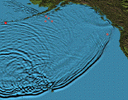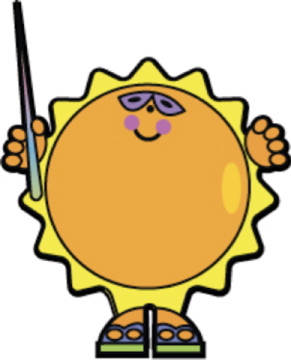Tsunami
What in the World's Are They?
| H20 says "If Earth doesn't be have I make a big wave!" |
|
Tidal waves created by a sudden disturbance in the ocean are known as tsunami.
Tsunamis are caused by an underwater earthquake, a volcanic eruption, an sub-marine rockslide, or, more rarely, by an asteroid or meteoroid crashing into in the water from space. Most tsunamis are caused by underwater earthquakes, but not all underwater earthquakes cause tsunamis - an earthquake has to be over about magnitude 6.75 on the Richter scale for it to cause a tsunami.
About 90 percent of all tsunamis occur in the Pacific Ocean.
Tsunami generally travel very fast across the ocean (typically 500km/h or more). The tsunami height and depth may vary widely.
Why is it different than a wind generated wave?
| Moonbeam says "I move make the tide-but not this wide!" |
 |
Regular waves (caused by the wind) are very different from tsunami waves. Tsunami waves are much faster than wind-generated waves and they have a much longer wavelength (the distance from crest to crest). In the deep sea, tsunami waves are very small, but by the coast, they dwarf regular waves.
Tsunamis are very rare. There are roughly six major tsunamis each century.
Where in the World's Are There Tsunamis?
About four out of five tsunamis happen within the “Ring of Fire,” a zone of frequent earthquakes and volcanic eruptions roughly matching the borders of the Pacific Ocean.
They tend to happen on famous trenches such as the Java Trench which is prone to Tsunamis. There are trenches in many other places on earth including Alaska and Japan, too.
World's Biggest Tsunami
The largest recorded tsunami was a wave 1720 feet tall in Lituya Bay, Alaska on the night of July 9, 1958
Learn about other natural disasters: Tsunamis, Volcanoes,Tornadoes, Earthquakes. |








